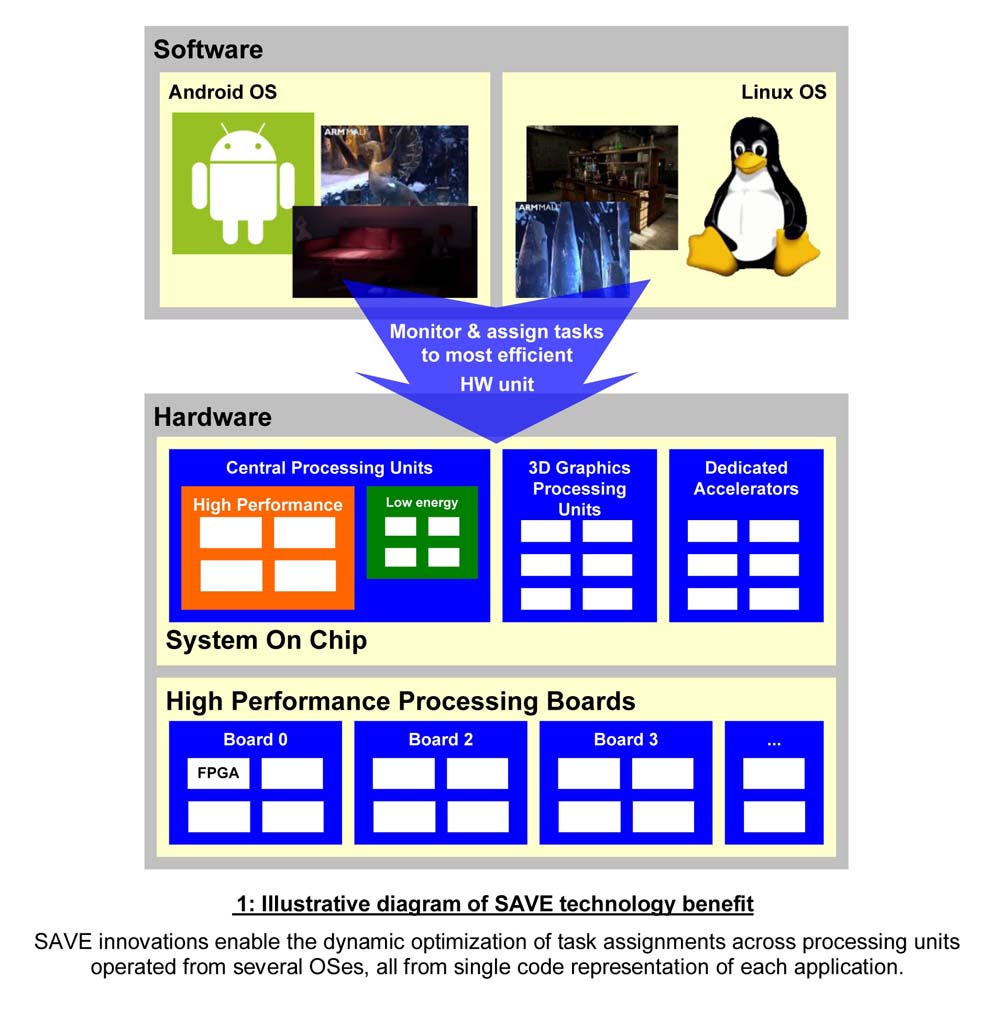If only by sheer volume and the speed at which technology is traveling, electronic systems are becoming more complex than ever before. With the impending Internet of Things (IoT) applications that foresees trillion of sensors deployed across countless systems that will interface them to the web for everything from home and industrial automation to high-speed data collection and analysis, the complexity factor will continuously multiply.
One project addressing this issue of complexity is the SAVE project. Funded by the European Union, the project, which reached completion this first week of September 2016, offered a team of engineers and researchers the opportunity to explore how complex hardware systems can more efficiently execute data intensive applications. The results were innovations leading to the melding of hardware, software, and operating system (OS) components to reduce application deployment costs and maximize usage of heterogeneous system computing units.
One major achievement was an overall boost in energy efficiency, showing improvements up to about 20%. That is a significant start to keeping power-consumption in check when countless systems start to come on line. Current systems benefiting from this include computer data centers, consumer electronics, automotive products, and industrial electronics. Additionally, the SAVE prototypes promise to deliver performance and energy-efficiency gains in high-performance computing (HPC) and embedded heterogeneous systems.
Key SAVE achievements quoted include:
- Platform behavior monitoring and task dispatching hardware and software: the first toolset closely tracks the performance and use rate of the various computing units available in the heterogeneous systems. The second toolset decides which computing units are best suited for the job.
- Just-in-Time compilation technology: using SAVE technologies, at runtime, a single application-code representation is optimizable to the many possible hardware targets of the platform: CPUs, GPUs, accelerators, FPGAs.
- Hardware and software virtualization technologies: these technologies efficiently expose the dedicated processing engines to the many virtual machines (VM) running on these systems. The teams successfully prototyped virtualized GPUs, virtualized FPGA-based data-flow engines (DFEs), and virtualized application-specific accelerators.

The innovations developed through the SAVE project are the results of research spanning three years by both academic and industrial collaborators. These include SAVE project coordinator Politecnico di Milano (Italy), ARM (UK), Maxeler Technologies (UK), STMicroelectronics (France), Technological Educational Institute of Crete (Greece), Paderborn University (Germany), and Virtual Open Systems (France). For further details on the SAVE project, CLICK HERE.